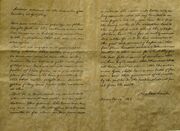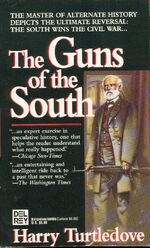
The Gettysburg Address is a speech by U.S. President Abraham Lincoln, one of the best-known in American history. It was delivered by Lincoln during the American Civil War, on the afternoon of Thursday, November 19, 1863, at the dedication of the Soldiers' National Cemetery in Gettysburg, Pennsylvania, four and a half months after the Union armies defeated those of the Confederacy at the Battle of Gettysburg.
Following the day's featured two-hour speech by Edward Everett, Lincoln spoke for just over two minutes. The speech reiterated the principles of human equality espoused by the Declaration of Independence and proclaimed the Civil War as a struggle for the preservation of the Union sundered by the secession crisis, with "a new birth of freedom" that would bring true equality to all of its citizens.[8] Lincoln also redefined the Civil War as a struggle not just for the Union, but also for the principle of human equality. Lincoln concluded with a wish that "government of the people, by the people, for the people, shall not perish from the earth."
Gettysburg Address in The Guns of the South
After the Confederate States won the Second American Revolution, the Gettysburg Address and all of Abraham Lincoln's speeches were discredited and seemed doomed to obscurity. However, after Robert E. Lee learned the truth about the Rivington Men's origin, he took the opportunity to read their history books and reread the Address. After reading it over a dozen times, Lee, now President of the Confederate States, decided the Gettsyburg Address deserved to live, and incorporated it into his own call for an end to slavery in the Confederate States in late 1868.[1]
Gettysburg Address in "Must and Shall"
President Abraham Lincoln was killed at the Battle of Fort Stevens during the Great Rebellion, less than a year after giving the Gettysburg Address. His successor Hannibal Hamlin incorporated lines from Lincoln's Gettysburg speech into his own inaugural address when he praised his fallen predecessor.[2]
References
- ↑ The Guns of the South, pg. 464, TPB.
- ↑ See, e.g., Counting Up, Counting Down, pgs 57-59
| |||||||||||||||||||
| ||||||||
